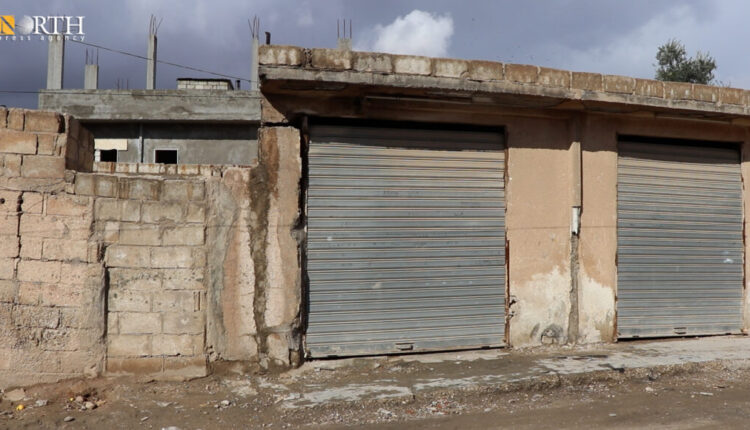
HASAKAH, Syria (North Press) – With a panicked voice, Abeer says she fears for her family members due to the devastating earthquakes that struck Syria and Turkey on February 6, especially since they live in an old house, whose walls and floor incurred cracks due to the earthquake.
The family of Abeer Abdurrahman, a 39-year-old resident of al-Mofti neighborhood in the city of Hasakah, northeast Syria, consists of six members.
She said, “We live in a state of panic in our houses,” due to the earthquake and aftershocks.
As a result of fear and horror and not feeling safety, “We cannot stay in the house for long periods,” she told North Press.
Abdurrahman points with her hand to the apparent damages caused to buildings by the earthquake, adding, “Walls in the old buildings in the city incurred many cracks; any motion in the earth interior could topple houses up on our heads.”
She says with sadness in her voice, “We are living a life full of horror; the earthquake added to panics of the war. Even fate cannot find its way to Syrians.”
Abdurrahman and her family, like many others in areas in North and East Syria, spend the entire night in their car, which has become their safe heaven when aftershocks occur.
The panicked woman wishes they had a tent. “It is safer for my family and me rather than staying inside a house in an ancient area.”
On February 6, residents in Syria and Turkey woke up to a 7.8 magnitude earthquake that has resulted in thousands of casualties and devastated a large number of residential building, trapping thousands underneath the rubble.
The victims’ toll in Syria has reached 2.536 dead and 4.711 injured, according to North Press’ Monitoring and Documentation Department.
In Turkey, the deaths have mounted to 6.234 and injuries to 37.011, according the Disaster and Emergency Management Presidency (AFAD).
The earthquake epicenter was 500 kilometers west of Hasakah and caused partial damage to buildings of the city, particularly those were built more than 50 years ago.
The 22-year-old Muhammad Kamiran, a resident of the same neighborhood, was terrified because “the first one [earthquake] was very strong. We feared for our children and that our house would collapse.”
Kamiran’s family’s biggest fear is that the events which have happened in the areas of north and northwest Syria and southern Turkey could be repeated in northeast Syria.
Kamiran expressed his fears of aftershocks: “If stronger aftershocks occur, walls will fall on our heads.”
Most residents of Hasakah were forced to leave their houses at night and spend the whole night in their cars, fearing the aftershocks.
However, Fatima and her six children found no shelter but the street when the earthquake occurred, and had to endure heavy rain and extreme cold.
The 39-year-old Fatima Amin, a resident of al-Khalij neighborhood in the city of Qamishli, said, “The earthquake two days ago has really shocked and scared us because infrastructure was damaged during the war. We are at risk of dying at any moment.”
Amin lives on the first floor of a five-story building. “Our lives will be at risk in case of another earthquake because most of the buildings in the neighborhood are old and already incur water leaks and cracks.”
Hassan, whose house is very old and could collapse at any moment, sent his wife and child to a relative’s house for fear of another earthquake.
The 40-year-old Hassan Dosho, a resident of Qamishli, narrated his experience to North Press, saying that, when the earthquake occurred, “The house shook like a swing; we fled it immediately and spent the entire night in the open under heavy rain and extreme cold.”
He adds, “My worn-out house is very old and is cracked from the outside. Many people advised us to get out of this building as it is at risk of collapse.”
